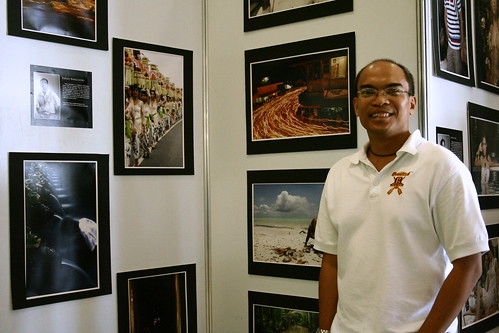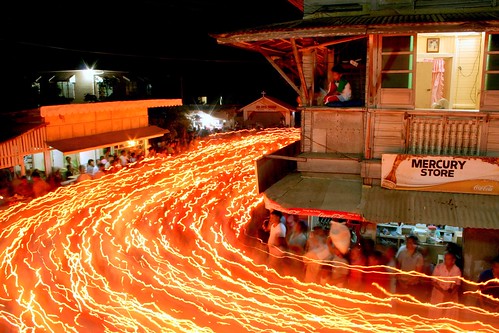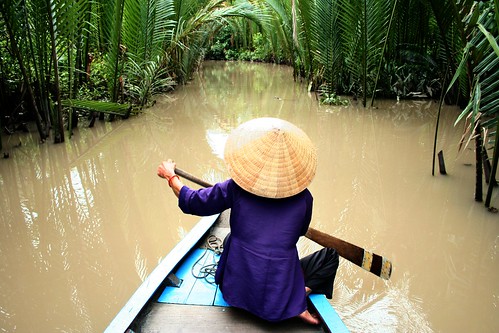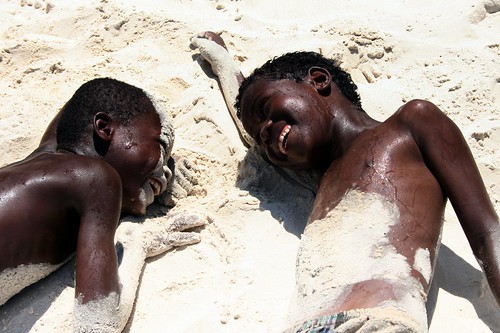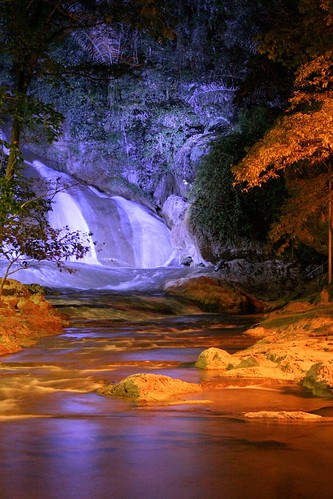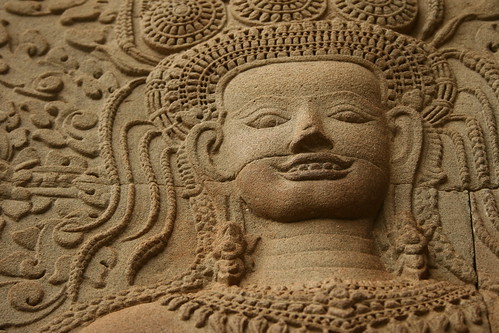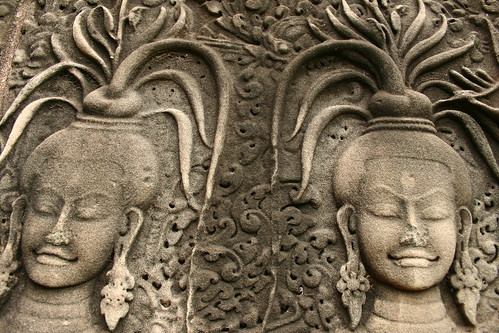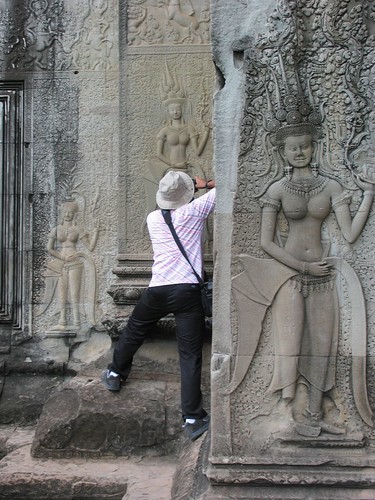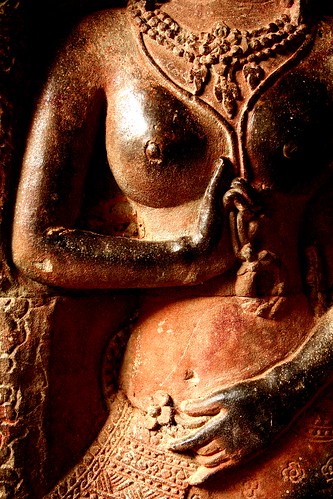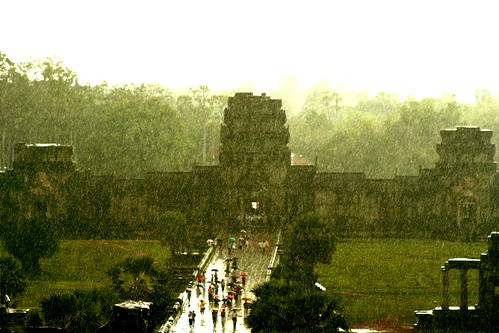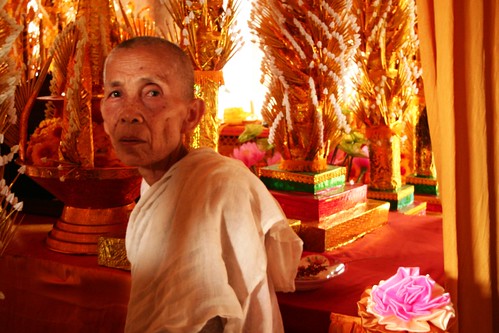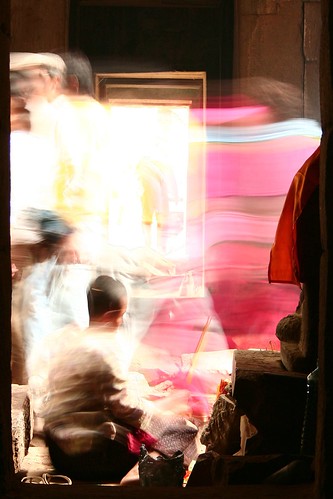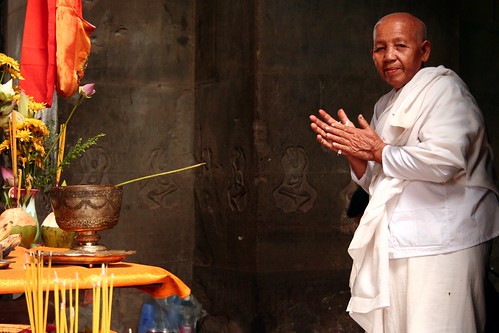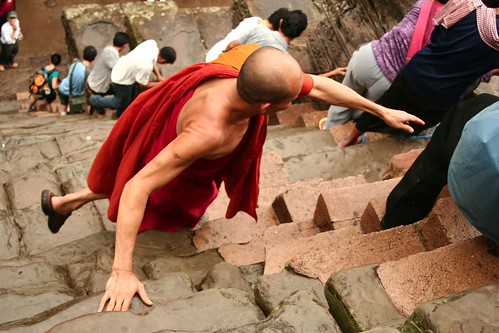the jungle temple of Ta Prohm
One goes to Cambodia primarily for Angkor Wat, the mother of all stone temples, incomparably larger than any other in the world. However, when it comes to pure appeal of the romantic and adventurist in you, the temple of Ta Prohm would be hard to beat.
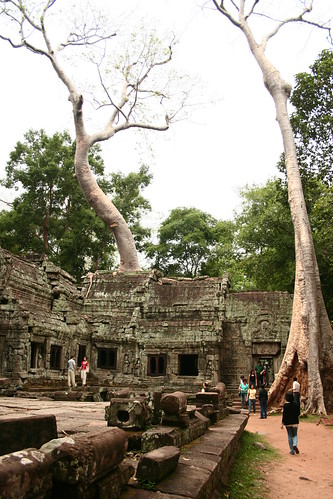
Two of the most common trees in the temple are the silk-cotton tree (Ceiba pentandra) and the strangler fig (Ficus gibbosa)
Canon EOS 350D, 1/200s, f/3.5, 18mm, ISO 100
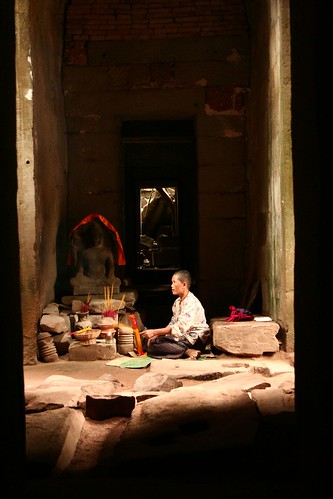
A nun praying inside a corridor of Ta Prohm
Canon EOS 350D Digital, 1/10s, f/5.6, 37mm, ISO 800, -1/3EV
Built in the 12th century in a flat squat style that is architecturally atypical to the pyramidal Angkor structures, Ta Prohm is about 1 kilometer by 600 meters from the outside. It is composed of five rectangular courtyards that ring around the innermost sanctuary. Three of the inner walls have galleries. The temple also is decked by more than 30 towers and numerous connecting corridors.
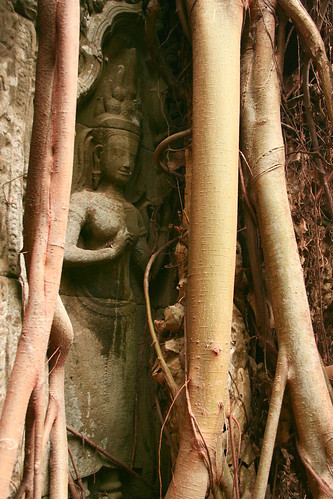
a wall of bas relief strangled by ficus in the central sanctuary
Canon EOS 350D, 1/60s, f/5.6, 27mm, ISO 400, -1.0EV
When the Khmer empire fell in the 15th century, all of the temple complexes were abandoned. During colonial times, the French started the task of restoring the heritage of Angkor. Among the innumerable temples, one temple was notably left as it is, almost conserved as when it was rediscovered in the early 20th century, Ta Prohm.
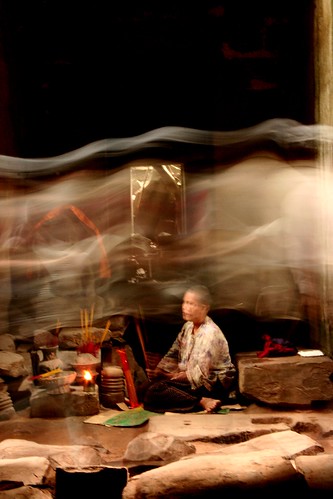
phototip: Use long exposure to create apparitions from the people passing by a relatively stationary subject (the nun).
Canon EOS 350D Digital, 4s, f/32, 55mm, ISO 800
Unique in its state as a temple married into the jungle, Ta Prohm instantly became the poster temple of the picturesque. The jumble of stones are still in disarray, corridors are left impassable and the state of ruins are conserved. Popular among tourists, it photogenically looks like an archeological dig.
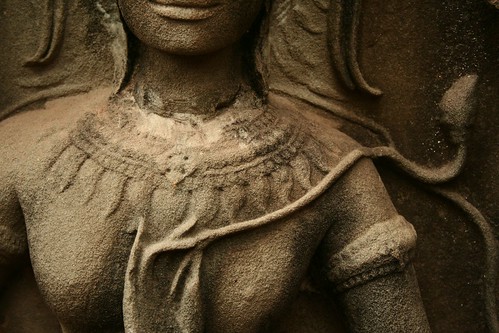
a devata stone relief in a gallery in Ta Prohm
Canon EOS 350D, 1/125s, f/5.6, 45mm, ISO 400, +2/3EV
What is more romantic that a temple overrun by nature, with trees creeping over the stone, vines splitting the walls and roots twisting over the bas reliefs?
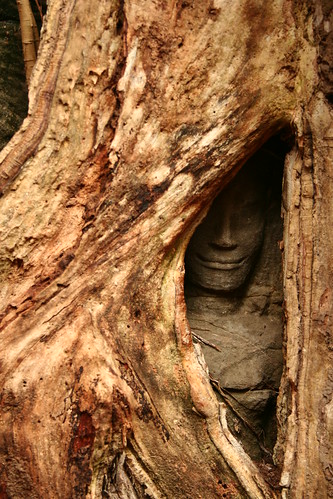
an apsara mysteriously smiling behind the roots of an encroaching tree
Canon EOS 350D Digital, 1/15s, f/5.6, 47mm, ISO 100, +1/3EV
Compromising between preserving the “jungle” look and repairing the structural integrity of the temple is a balance most difficult to achieve.
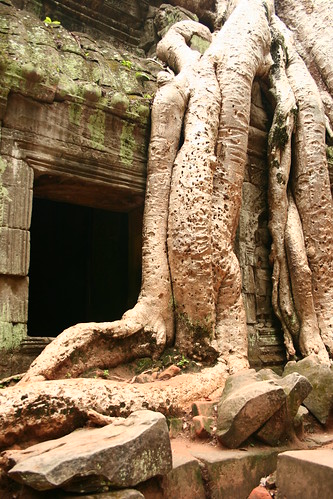
large roots render some of the passageway inaccessible
Canon EOS 350D, 1/50s, f/3.5, 18mm, ISO 100
Stepping into the temple gives you a feeling of walking into a movie set. And it was. During our visit, at almost every turn, we kept on hearing Japanese tourists gushing, Angelina Jolie!, Angelina Jolie. Indeed, part of the movie Lara Croft: Tomb Raider was shot here. This goes to prove that there is nothing more cinematic than reality.

this silk-cotton tree is now known popularly as the “Tomb Raider” tree
Canon EOS 350D, 1/60s, f/5.6, 18mm, ISO 100, -1/3EV
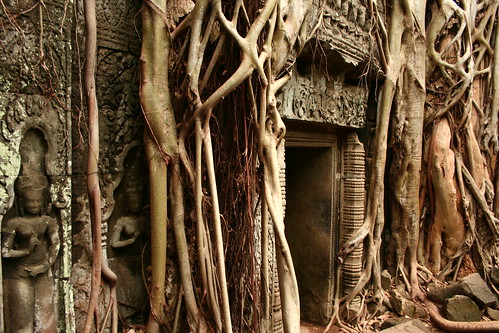
a closer look of the “Tomb Raider” tree in the central sanctuary
Canon EOS 350D, 1/25s, f/5.6, 18mm, ISO 100, -1.0EV








